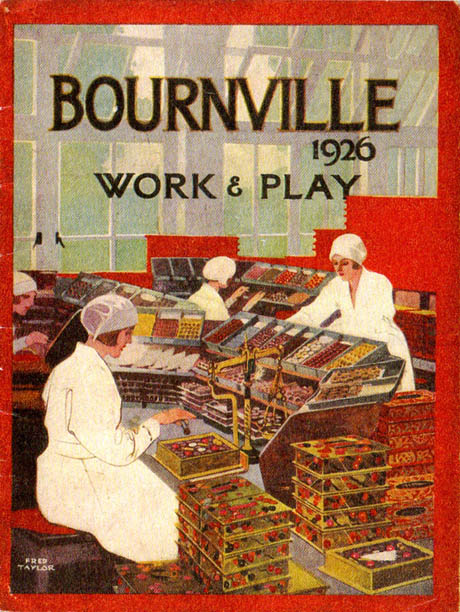Chocolate City
 [Image: Via Edible Geography].
[Image: Via Edible Geography].In a long new post, Edible Geography takes a look at the planned cities of chocolate barons, suburban sites where the capitalist ideal of a company town overlapped with philanthropic inclinations toward utopia. Quoting at length:
- The towns that chocolate built are a curious blend of idealistic vision and pragmatic company town—the convergence of paternalistic benevolence and capitalist expedience. The Cadbury and Rowntree brothers were devout Quakers, whose humanitarian beliefs undoubtedly impelled them to improve the living conditions of their workers. Hershey’s benevolence seems not to have been motivated by religious belief, despite the fact that he was raised by a strict Mennonite mother. However, he was undoubtedly a grand philanthropist, anonymously giving away his entire personal fortune (an estimated value of $60 million in 1918) at the age of sixty-one to endow a school for poor and orphan boys.
Nonetheless, as Tim Richardson is quick to point out [in his recent book Sweets], “philanthropy was always accompanied by efficiency in these developments.” Hershey chose his rural location, for example, less from a desire to ensure his factory workers had access to healthy, rural air, than for strategic gain—deep in dairy-farming land to ensure a cheap supply of milk, but close enough to major cities (Philadelphia and New York) to allow cost-efficient distribution.
Until then, see a related—and similarly titled—story over at Lapham's Quarterly, then check out the Edible Geography post in full.





Comments are moderated.
If it's not spam, it will appear here shortly!
I was hoping this post was going to be more like this: http://www.hulu.com/watch/33844/the-simpsons-the-land-of-chocolate
Post a Comment